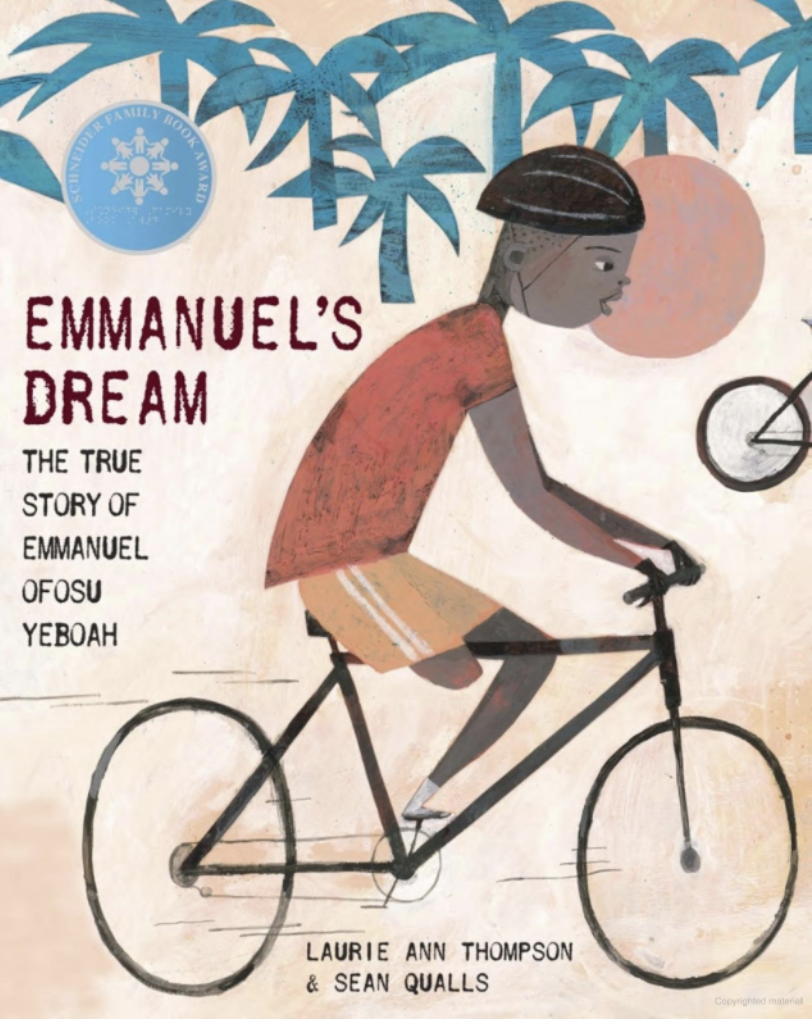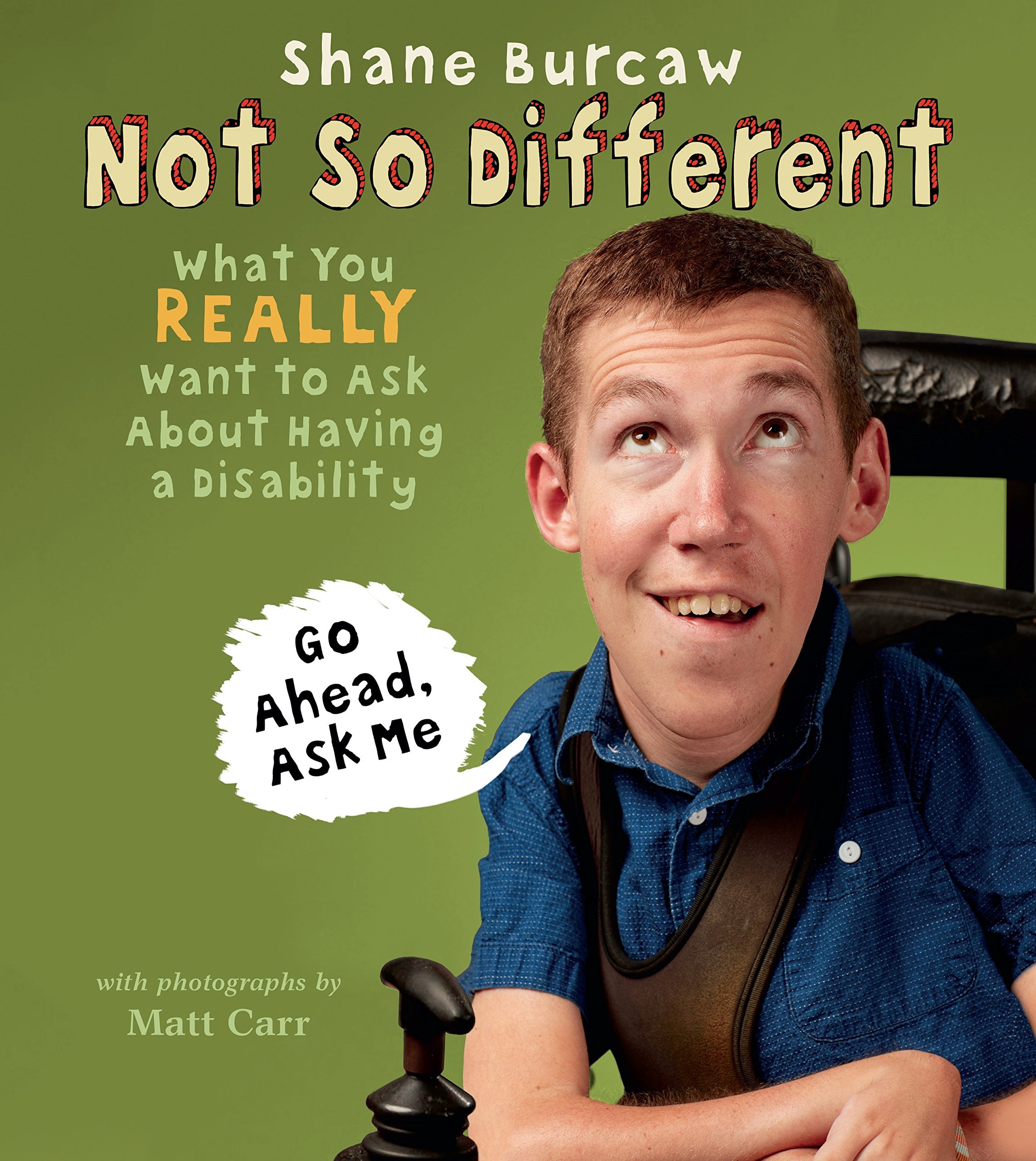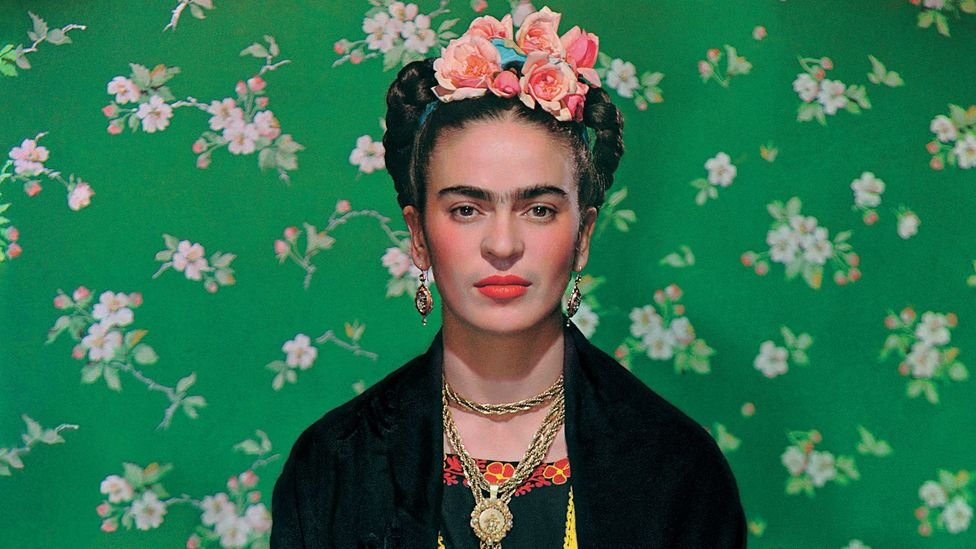
‘Emmanuel’s Dream’ Lesson Plan
Students will read ‘Emmanuel’s Dream’ by Laurie Ann Thompson, the true story of Emmanuel, a boy from Ghana who could only use one leg. Students will then complete a worksheet with a blank tshirt on it where they will write a word or phrase about how they are different but they are proud of that difference.
Image description: Cover image for “Emmanuel’s Dream”

Equity is Essential: Working to Achieve Access for All Lesson
Students will read Not So Different: What You Really Want to Ask About Having a Disability by Shane Burcaw and consider what it means to have a disability, what inclusion means and how to create a more accessible world.
Image description: Cover for the book “Not So Different: What You Really Want to Ask About Having a Disability”

Hispanic Heritage: Frida Kahlo (Intersectionality of Ableism, Creativity and Feminism) Lesson
Frida Kahlo (1907 - 1954) was a Mexican artist who was influenced by the Mexican Revolution. She experienced a disability at two times in her life. Her determinism helped her cope with the pain of overcoming polio, a difficult marriage and bus-trolley accident. Frida Kahlo’s curiosity and love for nature were often the subjects of her paintings. Known as the “mother of the selfie,” Frida also created more than 200 paintings of herself. This unit of lessons is to recognize the creativity and imagination of Frida Kahlo.
Image description: Photograph of Frida Kahlo against a green floral background

Maya Angelou Lesson
In this read-aloud of a picture book version of Maya Angelou’s “Life Doesn’t Frighten Me”, students will learn about and discuss fear, what it means to be brave, and how to cope when feeling scared. Students will learn about Maya Angelou and selective mutism, which is an anxiety disorder that Maya Angelou experienced for 5 years during adolescence.
Image description: Sketch of Maya Angelou
